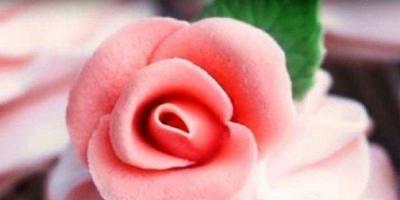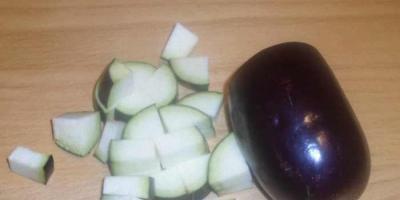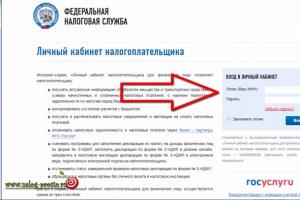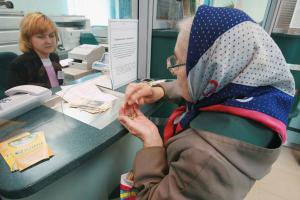Feeding roses is a very important agrotechnical moment in the life of these roses. beautiful flowers, if they are not provided with a sufficient amount necessary elements, there will be a lag in growth and flowering, loss decorative look, the plants will begin to hurt. There are a variety of fertilizers and options for their use in order to feed rose bushes.
Feeding roses - why is it needed?
Growing roses is not an easy task, the flower is capricious, and not everyone can handle it. One of the main conditions of care is fertilizing, which should be given special attention, depending on the season and growth cycle. different types fertilizers Knowing the best way to feed roses in the summer or autumn-spring period, you can prepare in advance several types of fertilizers (organic and mineralized complexes), which affect the growth and full development of the plant in different ways:
- nitrogen- accelerates the growth of leaves and shoots;
- phosphorus- promotes abundant flowering and easy wintering;
- potassium, iron- will help retain water and resist diseases;
- microelements- strengthen the rose;
- organics- “feed” the bush with various useful elements.
How to properly feed roses?
Feeding roses, like all flowering plants, occurs throughout the year in several stages. After carrying out preventive pruning in spring, nitrogen and organic fertilizers for roses should be introduced into the soil. Summer application of various fertilizer complexes is carried out three times:
- in June, during the period of bud formation;
- in July, after flowering, to maintain “tired” plants;
- in August to replenish and balance the supply of microelements.
In the fall in September, you should definitely feed roses using a plant that can slowly decompose and be absorbed by the plant throughout the winter. Potassium, which is quickly absorbed by the plant, will help strengthen the rose before the upcoming cold weather. But adding nitrogen in the fall is categorically unacceptable, as it will lead to excessive growth and will not allow the plant to reach a state of dormancy in time.

Spring feeding of roses
A profusely flowering rose bush is the dream of every gardener; for this, the land must be fertile, with fertilizers applied to it even before subsidence. In the spring, when planting roses, pour a 5 cm layer of humus into the bottom of the prepared holes. Bury the seedlings with a mixture of soil, superphosphate, potassium salt and humus prepared two weeks before planting. Fertilizer for roses in spring can be applied in April-May; use saltpeter, nitrogen, phosphorus, and organic matter for this. Draw a groove around the hole in which to place rotted mullein, which is an excellent food for roses.
Feeding roses in summer
Feeding roses in the first summer month, during the formation of buds, is done with chicken droppings, or green fertilizers prepared in the form of solutions (in dry form they can burn the roots of plants). Organic matter will attract earthworms, which loosen the soil. Fertilizers for roses in the summer, in July, when the plants have bloomed and are pruned, are needed with a large amount of phosphorus or potassium, so you can use store-bought, universal complexes mineral fertilizers. On warm evenings, especially after rain, spray special nutrient solutions on the leaves.
How to feed roses to grow?
To ensure that the rose does not lag behind in growth and enjoys long-lasting flowering, it needs annual feeding. The absence of any elements can lead to poor development and loss of decorative appearance. Knowing what to feed roses in the spring for growth, using the right types of fertilizers, adhering to the principles of their correct application to the soil, you can get a spectacular, beautiful plant.
For rose growth, dense foliage and developed buds, nitrogen is necessary; it is added in spring and early summer. In order for a rose bush to grow well, develop, and strengthen the root system, phosphorus and potassium are needed. The main rule when applying these fertilizers is not to overdo it; an excess of these substances can lead to leaf fall and a cessation of plant development and growth.
How to feed a rose after planting?
Roses planted in spring, in fertile, well-prepared soil, saturated with fertilizer, do not require summer and autumn feeding. In the first year, you need to give them the opportunity to take root and grow. Only after noticing that the plants are developing poorly, their young shoots are bent, the leaves are turning yellow, you can support the roses with fertilizing from weakly concentrated mineral, phosphorus-potassium fertilizers or organic matter.
Feeding roses after planting in the fall, preparing them for the winter cold, occurs by applying fertilizers that will help them: protect them from diseases, strengthen the wood of the bushes, and stimulate further growth. For these purposes, it is best to use
- potassium (sulfate or chloride), potassium magnesium;
- simple or double superphosphate;
- calcium (found in wood ash, slaked lime, dolomite flour, mele).

Feeding roses during budding
For roses, timely feeding, consisting of correctly selected elements, is very important. The list of what to feed roses during and after budding includes: effective means, based on potassium:
- saltpeter;
- potassium salt;
- potassium chloride;
- potassium sulfate.
During budding, the lack of potassium can cause various diseases or poor flowering. During this period, nitrogen-containing fertilizers should not be used; they will only lead to rapid growth of greenery and shoots, but not to an increase in the number of buds. An effective feeding at this time will be a diluted infusion of chicken manure (0.7-1 liter of infusion per 9-10 liters of water) or wood ash sprinkled around the bush.
How to feed blooming roses?
So that the roses bloom profusely, experienced flower growers It is advised to maintain a balance between fertilizers (mineral and organic), without giving preference to one of these types, and also to use foliar species fertilizing Feeding roses during flowering is not always necessary; the plant variety and individual approach to it, there is room for experimentation.
The best feeding for roses during flowering, as at any other time, is manure. The development and flowering of roses are positively influenced by herbal infusions with the addition of peat, good compost, they serve for flowering plant excellent sources of nutrition, enriching the soil with humus, improving its composition. Organics improve the absorption of minerals, so the best solution is a combination of them.
How to feed roses for abundant flowering?
At different times of the year, garden plants require different nutritional elements, therefore, how and what to feed roses in the spring for lush flowering, must be decided according to the growth cycle. In spring, the rose requires feeding for the active development of new shoots, strengthening the roots and, as a result, good flowering. Phosphorus is best suited for these purposes (how many flowers will appear on the bush depends on it), ideal option there will be a combination of it with potassium and nitrogen.
Feeding for garden roses - methods
Selection of fertilizers for garden rose is huge, there are two ways to use them: root feeding and foliar feeding. To understand what kind of feeding roses like, use both of these methods and look at the result, it manifests itself individually, depending on the growing conditions and variety. Using root dressing, water the plant with a liquid solution immediately after rain or watering if the soil is wet, so as not to burn the roots of the roses. For foliar feeding, use herbal infusions; spray in cloudy weather, so the composition will remain on the plants longer.

Feeding roses with yeast
In order for roses to grow “by leaps and bounds,” use a yeast solution in the form of fertilizing and stimulant in April-May, and from the second half of June, after flowering begins. Before feeding roses with yeast, make sure that the soil has warmed up; fungus will not develop in cold soil. Yeast will have a beneficial effect on the following areas:
- stimulate active growth;
- will ensure the formation of a powerful, healthy root system;
- will ensure the fastest rooting during planting;
- will reduce the likelihood of disease occurrence.
Yeast fertilizing is the first remedy as a fertilizer when planting in open ground rose cuttings To awaken the cuttings, soak them in a yeast solution, and only then proceed to planting. Yeast has a great effect on the growing season of roses, but there is a danger of overfeeding the plants. To avoid oversaturation, use this feeding when transplanting, and a couple of times in the summer.
How to feed roses with mullein?
Mullein is a complete fertilizer because it contains the entire complex of minerals necessary for growing roses:
- nitrogen;
- phosphorus;
- potassium;
- calcium;
- magnesium;
- zinc;
- copper.
Rotted mullein is excellent as spring fertilizer for roses, it can be added to the soil, preparing it for planting, or directly into the holes (diluted). Apply fresh mullein to the soil in the fall, when digging, so that before spring it burns out (rots) and does not burn the roots of the roses. The first feeding of roses with mullein can be done after pruning the bushes in spring, then before flowering, and another in early August. After such procedures, a crust appears on the ground, preventing the roots from breathing; loosen it along with the soil.
How to feed roses with chicken droppings?
When wondering whether it is possible to feed roses with chicken droppings, it is important to know that this fertilizer in its fresh form is toxic and concentrated; it must be used very carefully. At correct use There will be no harm to the plant, and the benefits are obvious. When using this fertilizer, the growth of bushes is significantly accelerated, the buds become larger, and flowering is observed 2-3 times a season.
The best time to use chicken manure in the form of humus, with straw or leaves added to it, is autumn. Use diluted chicken manure during active flowering, but no more than three times per season. The results of using this fertilizer are noticeable within a few days; after its application to the soil, the plant begins intensive growth and development. An aqueous solution is made at a rate of 1:15 (a more concentrated solution can burn the roots of roses), applied directly under the roots, into abundantly moistened soil.

How to feed roses with ash?
Ash is a “food additive” for roses, being multi-functional, it will help in the development and growth of the plant and in pest control. It is especially good to alternate fertilizing with diluted ash (1 cup per 10 liters of water) and organic matter (bird droppings, mullein); use ash in combination with compost or a decoction of herbs. When giving advice on what to feed a rose in the garden, you can turn to the experience of our ancestors; they used manure, compost, wood and bone ash. Ash concentrates all microelements, add it better in spring when planting, in the fall it is washed away.
Feeding roses with ammonia
Ammonia is an effective fertilizer for roses, due to its high nitrogen content, which is necessary for plants, like bread for people. This type of feeding is often one of the best, even superior to organic. A solution is used as a fertilizer, which can be made by adding 25 ml of ammonia to 10 liters of water for root feeding or 1 tsp. per 1 liter of water for foliar feeding, which is done early in the morning, at sunset, in cloudy weather.
The best fertilizer for roses, trusted by experienced flower growers, is still manure or humus; complex, balanced purchased fertilizer mixtures have also proven to be convenient and effective; they are effective and convenient. Ammonia is also recognized as a simple, affordable and effective fertilizer that promotes the growth, protection and flowering of roses.
The first fertilizers are applied when preparing the area for roses. In the fall, the soil is dug up 60 cm deep and organic matter is added for digging. You can start planting roses at the end of April. About 0.5 kg of well-rotted manure is additionally added to the bottom of each hole prepared for bushes.Further feeding begins in the summer - with liquid organic fertilizers. The best feeding for young roses is slurry, which contains everything necessary for the plant at this stage of development of the substance. Do 3-4 feedings per season, starting in June, every two to three weeks. The solution is prepared from mullein with water in a ratio of 1:3. It needs to be stirred and left to infuse for 10 days, and before feeding, diluted again with water 1:10. Before fertilizing, water the soil under the bushes, then add 3 liters of nutrient solution to each bush.
It is not recommended to add mineral elements to the mixture for feeding young rose bushes planted this year. But in order to ensure that nutrients are not wasted, it is necessary to remove emerging wild shoots from the mother bush, cutting it out at the base.
In the first year, young roses should not be allowed to bloom early for the same reason - they need to gain strength and nutrients for flowering next year. Throughout the season, until the beginning of August, the buds that have formed are removed from the bushes. Leave only 1-2 flowers on each shoot so that they bear fruit in the fall. Then the bushes will ripen better and bloom more profusely next year.
Caring for roses in the second year
Plantings of the second year and subsequent years usually bloom several times during the growing season. At the end of each flowering, part of the shoots must be cut off to ensure the next flowering.The soil under the bushes is loosened twice a month to a depth of 10 cm to provide the roots with access to oxygen. The entire area is dug up twice a season, to a depth of up to 25 cm. The first time this is done after the roses open, the second time at the end of summer. Roses need regular and abundant watering. In hot weather it is carried out weekly. It is especially important that the plant has enough moisture during the period of growth and bud formation. Mulching with humus or high-moor peat helps to retain moisture in the earthen circle after watering.
Feeding is carried out regularly, starting from the spring of the second year. At this time, both organic and mineral fertilizers are already applied. You can use the same composition for fertilizing as for annual plantings. But it is better to use humus instead of mullein and be sure to add 10 mg of potassium and phosphorus fertilizers to it for each bush.
Tip 2: How to feed roses in June for lush flowering in the garden
Rose is one of the most capricious crops. The plant requires special attention and needs frequent feeding. Without timely application of fertilizers, you cannot expect that the “queen of the garden” will bloom magnificently and for a long time.
Before deciding what fertilizer to use for roses, it is worth remembering that young bushes respond better to organic fertilizers, and specimens older than three years respond better to mineral fertilizers. Therefore, if a crop was planted last year or the year before, then it is better to feed it with organic matter. An infusion of weeds, manure (fresh or rotted) or chicken droppings is suitable for this. Compositions for drinking roses are prepared as follows:
- the droppings are diluted with water in a ratio of 1 to 20 (0.5 liters per bucket), and infused for five days. Fertilizer feeding is done after diluting the composition in half with water;
- manure is diluted with water in a ratio of 1 to 10 (one liter per bucket), and infused for five days. Fertilizing can also be carried out only after diluting the resulting concentrate one to one with water.
- 3/4 of the bucket is filled with chopped weeds, and the remaining volume is filled with water. The composition for feeding is ready after three to five days (after fermentation). Since the mixture turns out to be concentrated, before use it must be diluted with water at the rate of 1 to 10.
As mentioned above, middle-aged rose bushes respond much better to mineral fertilizers, so to feed them it is better to use ammonium nitrate (30 grams per square meter beds), superphosphate (10 grams per bucket of water) and potassium sulfate (15 grams per 10 liters of water). If the above-described preparations are not available, then wood ash can be used for feeding (50 grams of the substance per 4 liters of water, this volume is calculated for one bush). Regarding industrial complex fertilizers, then “Zircon”, “Agricola-Aqua”, “Pokon”, “Bud Plus” have proven themselves well.
The combined use of organic and mineral fertilizers is very effective. Organic is, of course, healthier. It not only nourishes the plants, but also improves the structure and properties of the soil. But when increased doses of mineral fertilizers are applied, excessively strong salt solutions are formed in the soil, which inhibit the development of roots. This is where organic substances come to the rescue, absorbing some of these compounds and gradually releasing them to the plants.
The main rule when using mineral fertilizers is that everything is good in moderation! Despite the shortcomings, their benefits are obvious. Organic fertilizers act slowly, while mineral fertilizers act quickly. Therefore, for the most better conditions nutrition option is suitable when both groups are included.
Help: If you have seasoned well landing hole, then there is no need to fertilize roses in the year of planting. Young plants benefit from foliar feeding and potassium feeding in the fall to prepare for wintering.
Dry fertilizing should be carried out only after heavy watering or rain. There is no need to pour fertilizer into the center of the bush, step back 10-15 cm, then you need to water the ground again.
Heavy clay soils with a high content of organic matter retain nutrients better than sandy soils poor in humus, so clay roses can be fed less frequently. If the summer is rainy, then the plants need to be watered more often, and the recommended doses should be increased.
During flowering, roses are not fed.
MINERAL FERTILIZERS.
Nitrogen.
Nitrogen is required for active growth of shoots and lush foliage. It is consumed by roses in large quantities during a period of intensive growth. Nitrogen fertilizers: ammonium nitrate, urea. When do we need new shoots to grow most actively? Of course, in spring and in the first half of summer. Do we need new shoots in the fall? No. One of the most important conditions for successful overwintering is well-ripened shoots, and those that grew in late summer and autumn will remain with unripe wood for the winter and, most likely, will die. If there is moisture under the shelter, they will begin to rot, as a result of which the entire bush may die.
With an excess of nitrogen, roses develop quickly, but flowering is delayed: the number of flowers decreases, roses become fattened and therefore are more often susceptible to fungal diseases. The highest concentration of nitrogen is in young leaves and shoots. Juicy young foliage attracts aphids, so overfed roses suffer the most from them!
To prepare a solution of ammonium nitrate or urea, take 1 tablespoon of fertilizer per 10 liters of water.
Reference: Fatliquoring shoots are annual shoots, the length and thickness of which exceed the average characteristics of the variety. Such shoots usually take a lot of energy from the plant, do not readily branch, do not bloom, and spoil appearance. If it is not climbing rose and if by July the shoot has not bloomed, it is recommended to cut such shoots by a third or more.
Phosphorus
Phosphorus promotes abundant flowering. But the most interesting thing for us is that it helps accelerate the development of roses. What does this mean? Under the influence of phosphorus in the cell sap, the content of soluble carbohydrates increases, the ripening of shoots is ensured and, as a result, the freezing point decreases. This is exactly what we need for a safe wintering of our roses. Phosphorus fertilizers: double superphosphate, superphosphate, ammophos.
Potash
With a lack of potassium, plants are more easily affected by diseases, so potassium-phosphorus fertilizing is recommended for prevention (100 grams of superphosphate plus 30 grams of potassium sulfate per 10 liters of water). In addition, this substance helps roses retain water, and during hot weather the leaves do not wither so quickly. Potassium together with phosphorus affect the abundance of flowering and even the color of plants. It is good for them to feed roses during the budding period.
Potassium also promotes the aging of wood, increasing the content of proteins and carbohydrates. And the most interesting thing: it enhances the movement of sugars from the leaves to other organs of the plant, and due to their accumulation in the cell sap of the shoots, the freezing point of the rose decreases.
What kind of sugars are so wonderful? We all know that cell sap consists of water and various substances. What happens when the temperature drops? The water freezes and turns into crystals. Most common cause of winter death garden plants– freezing associated with the formation of ice crystals in cells. Sugars protect a large volume of intracellular water from this and significantly reduce the amount of ice formed. Now it’s clear why experienced rose growers advise covering roses from heavy rains in the fall. The shoots should not take on too much moisture. And sugars increase the viscosity of protoplasm and reduce the amount of water in cells; thereby significantly reducing the amount of ice formed.
Now the “rule of measure”. Roses overfed with potassium become fatty, bloom late, and undeveloped buds rot.
The most common potassium fertilizers: potassium chloride, potassium sulfate, potassium nitrate, potassium magnesium.
It is not recommended to use potassium chloride, despite the fact that this fertilizer is the most high content substances. This fertilizer also contains chlorine, which inhibits the development of roses. Most often I use potassium sulfate or potassium magnesium. To prepare the solution, take: 30 grams of potassium sulfate per 10 liters of water or 1 tablespoon of potassium magnesia per 10 liters of water.
Microelements
There is no need to frequently use microelements for fertilizer; it is enough to feed the roses once or twice a season. The most effective feeding is foliar feeding.
Foliar fertilization is often much better than regular fertilization, especially when the plant is weakened or weather conditions leave much to be desired. Its advantage is the speed of absorption of microelements by plants. It is necessary to spray until the leaves are completely wetted, and both sides should be treated. This should be done in cloudy weather or in the evening.
FOLROOT FEEDING
Foliar feeding is recommended using micro- and macroelements. It is enough to dissolve nitrogen and potassium fertilizers in cold water when stirring shortly before spraying. Superphosphate must be infused for 24 hours. For foliar feeding, it is better to choose dry but not hot weather.
Foliar feeding can only be done with a freshly prepared solution.
They do not salinize the soil (ballast, which is present in mineral fertilizers), do not destroy soil microorganisms and earthworms. Foliar fertilizing is applied only in the evening so that the drops of fertilizer do not dry out on the leaves for as long as possible. It cannot be carried out wet or cold weather when heavy dew is expected. Foliar feeding is especially dangerous when there are already pockets of black spot on the leaves.
For foliar feeding of roses, a complex liquid fertilizer for indoor flowers is quite suitable: in addition to the main nutrients, it contains all the necessary microfertilizers. But in no case should the spring application of prefabricated compost or humus be excluded from fertilizing roses.
ORGANIC FERTILIZERS
(from personal experience Stefan Fedorovich Nedyalkov)
Organic fertilizers contain plant nutrients mainly in the form of organic compounds. These include manure, composts, peat, green manure and others. Roses need organic fertilizer, but remember that fresh manure can burn their fresh roots, so use only rotted or semi-rotted manure.
- Chicken infusion. I do this: I dilute chicken manure in a 50-liter container. The proportions depend on the freshness of the manure. Typically this is 1:20; if the litter has been lying around for a long time, then the separation is 1:10. For convenience, I use plastic barbecue jars. I pour 2.5 cans of litter into the bath and fill it with water. I add superphosphate, approximately 500 grams and a liter bucket of ash, let it sit for a week. For watering, I dilute 3 liters of infusion in a bucket of water.
- Cow infusion. For 50 liters of water I take 5 liters of manure, 500 grams of superphosphate and a liter bucket of ash, let it sit for a week. For watering, I dilute 5 liters of infusion in a bucket of water.
I prepare slurry for feeding roses as follows: fill the container 80% with fresh mullein, fill it to the top with water, add 100 grams for every 10 liters wood ash. I stirred the solution daily for two weeks. Since nitrogen predominates in slurry, phosphorus and potassium fertilizers must be added to the fertilizing.
In addition to all the chemical elements necessary for roses, slurry also contains bacteria that mineralize organic compounds that are inaccessible to plants, converting them into an assimilable form.
To feed roses I use the following solutions (10 l per 1 sq. m):
- first feeding (in May): 9 liters of water, 1 kg of mullein, 20-30 g of superphosphate, 15-20 g of potassium sulfate;
- second feeding (in July): 9 liters of water, 1 kg of mullein, 20-25 g of superphosphate, 25-30 g of potassium sulfate.
When feeding roses, it is better to add slurry to the soil, and all mineral fertilizers - in the form of foliar feeding on the leaves. To do this, you need to use doses three times less.
- Herbal infusion
. If you are unable to purchase manure, you can make your own organic fertilizer from plants. I prefer nettles, but almost any weed tops that can be used before the seeds ripen will work.
I fill a large 10 liter plastic bucket almost completely with green nettle mass. Foliage, stems, and even roots are used. Using pruning shears, I chop the nettles into smaller pieces. The mass is compacted tightly into two-thirds of the bucket. I add 100 grams of superphosphate (every other time I use urea instead), a glass of ash, fill it with water and leave it for a week. In the sun, the fermentation process accelerates. To water the roots, I use an unstrained infusion (1 liter per 10 liters of water); to spray the leaves, I filter the infusion and dilute it immediately before use (0.5 liters of infusion per 10 liters of water).
FEEDING SCHEME
APRIL (end of April - beginning of May). If the weather permits, after pruning the rose, you can feed the roses with nitrogen fertilizers for the first time. I prefer ammonium nitrate or urea. You can also use Kemira spring (now it is trademark Fertika - approx. Qaz1971). Proportion: 1 tablespoon of fertilizer per 10 liters of water. If in dry form, then 1 tablespoon under the bush, followed by loosening and watering.
After a week, feed the roses with organic fertilizers: half a bucket of rotted manure for each bush. Stepping back 10-15 cm from the center of the bush, make a wide furrow with a hoe and lay down fertilizer, followed by loosening and watering. In the spring I do only dry fertilizing, in the summer - only liquid.
MAY. If you did not feed your roses in April, do so in early May. In mid-May, use mineral fertilizers with a high nitrogen content: ammonium nitrate, urea. Proportion: 1 tbsp per 10 liters of water.
If I have the opportunity, I replace the above-mentioned fertilizing with mineral granular fertilizer from Greenworld. After this, I water the roses with a solution of organic fertilizer: infusion of mullein, chicken manure or green fertilizer (two two-liter buckets for each bush).
JUNE. At the beginning of June, when the rose budding occurs, it is necessary to use calcium nitrate and a solution of organic fertilizers (infusions of mullein, chicken manure or green manure).
This month it is good to do foliar feeding: alternate double superphosphate with potassium nitrate, ash infusion, mullein infusion and microelements.
Before flowering (in mid-June), it is necessary to fertilize roses with potassium sulfate and magnesium sulfate or potassium magnesia. You can also use sodium humate. For each bush, 2 liters of solution is enough.
JULY. After flowering and pruning, roses must be fed with a universal mineral fertilizer with a high content of potassium and phosphorus (for example, Kemira universal; proportion: 1 tablespoon per 10 liters of water) and a solution of organic fertilizer (infusion of mullein, chicken manure or green fertilizer)
It is also worth using foliar feeding: double superphosphate with potassium nitrate, ash infusion, mullein infusion, microelements.
AUGUST. At the beginning of August, feed the roses for the last time with organic infusion. After two weeks, use potassium-phosphorus fertilizers. After another week - potassium sulfate. Also use foliar feeding: ash infusion, microfertilizers, double superphosphate.
SEPTEMBER. At the beginning of the month, roses can be fed with potassium magnesia.
Based on materials from the book by Tadeusz Yu.E., Nedyalkov S.F. “Roses in your garden: choose, care for, enjoy.” 2011
Good and balanced nutrition plays a big role for roses. These plants need additional fertilizer and respond well to it. Only when good care and timely fertilizing, the gardener will be able to obtain healthy and blooming rose bushes.
Types of Fertilizers
From flower lovers you can often hear the question of how to feed roses in the spring for lush flowering in the garden, so first let’s try to figure out what kind of fertilizers there are, what is included in their composition and how to use them. Fertilizers can be organic and mineral. Organic fertilizers include manure, humus, rotted grass, etc. Mineral nutrition for plants is produced in the form of granules, powders, tablets or liquid solutions, and may include one to several components.
In any case, roses need the following nutrients:
Nitrogen
This element helps increase the green mass, but its excess negatively affects the formation of buds, so an excess of nitrogen leads to an abundance of greenery and small and sparse buds.
Phosphorus
Responsible for the formation of peduncles, flower buds, and the number of flowers. This element should always be applied in tandem with nitrogen.
Magnesium
It is needed most of all during the formation of flower buds. As a rule, it is not enough during periods of prolonged rains or with the appearance of melt water. At this time, it is simply washed out of the soil.
Iron
This element is simply necessary to prevent diseases such as chlorosis.
Basic rules for feeding roses:
- First year plants do not need additional nutrition;
- Before feeding the plants, water the soil well;
- When roses bloom, no fertilizer is used;
- Foliar feeding is carried out only with fresh solution;
- It is better to underfeed a rose than to overfeed it.
Spring “menu” for roses
It is simply necessary to feed roses in the spring before flowering; this can be done with the help of organic and mineral fertilizers, which together ideally complement each other. The basis for plants is mineral nutrition, in this case the flower receives nutrition quickly. Organic matter decomposes slowly, but at the same time it helps to optimally absorb mineral elements. Based on the experience of flower growers, they are first fed with mineral fertilizers, and then with an organic solution.
When using mineral fertilizers, you need to pay attention to the composition, which must contain phosphorus, nitrogen, potassium, magnesium, iron, and calcium.
To avoid burning the plant roots, liquid fertilizer is applied only to moist soil. Granular mineral fertilizers are evenly distributed around the plant, after which they are partially incorporated into the soil using a hoe. Compost also helps feed roses in the spring for abundant blooms. A bucket of compost is enough for one plant; it is evenly distributed and covered with decorative bark so that the aesthetic appearance of the flower garden is not damaged. Compost helps retain heat and moisture in the soil, covers the root system and improves the appearance of the plant. The main thing is not to cover the rose trunk with fertilizer.
In spring, the type of fertilizer for roses depends on the age of the bush. If the plant was planted in the previous year, then it is optimal to use organic matter. After it passes spring pruning roses, many flower growers are interested in how to feed roses in the spring for growth, so this is primarily fertilizers containing nitrogen and phosphorus.
Feeding roses using folk remedies
Folk remedies for feeding roses in the spring are no less effective than industrial fertilizers.
Yeast
An excellent growth stimulator for any plants. Thanks to yeast feeding, the number of beneficial bacteria in the soil increases; it also replaces complex mineral fertilizer. To prepare it, you can use dry and raw yeast. For one liter warm water take 10g of yeast and 1 tbsp. spoon of sugar. All components are mixed well and placed in a warm place for a couple of hours. After which the contents are dissolved in 5 liters of water and the plants are watered.
Onion peel
And they prepare a solution and spray it on the roses leaf by leaf. This fertilizing will allow plants to quickly receive nutrients and protect them from many diseases and pests. To prepare an infusion you simply need 4 liters of water and 100 grams. Husks, Boil everything for 10 minutes and let it brew for several hours. After which it is fashionable to spray the roses.
Humus
This universal fertilizer is successfully used for feeding garden and indoor flowers. Humus contains a lot of useful microelements that are quickly and easily absorbed by the root system. Added humus to the soil improves its structure many times over.
Manure
Use only rotted fertilizer. Manure contains almost all the necessary nutrients that roses need. Rotted manure can be added to the soil together with other nutrients.
Nettle infusion
Nettle is one of the first to germinate in the spring, and during this period it will not have seeds, so it is well suited for useful fertilizer. Nettles are placed in a 10 liter bucket and filled with water and allowed to brew for 3-5 days in a warm place. The prepared solution is diluted 1:1 and the rose bushes are watered.
Bird droppings
Bird droppings refer to organic fertilizer, it contains many microelements useful for roses. The effect of adding poultry manure lasts for 2-3 years, this is explained by the fact that all the nutrients from chicken manure are released slowly. Do not add to the soil bird droppings fresh, as uric acid can burn the plant. To reduce concentration useful substances(and there are a couple of times more of them in it than in cow dung) it is left in the fresh air on long time. For the manufacture of liquid fertilizer Dry and fresh droppings are suitable. For preparation use 1 part manure and 20 parts water. Infuse the mixture for 10 days, stirring the contents occasionally. The resulting solution is not used to water the rose bushes, but to the row spacing.
Ash
Wood ash is rich in potassium and phosphorus, these are the elements that flowers need all season long. It can be used dry or prepared as a solution. Dry ash consumption is 1 cup per rose bush. The ash is evenly distributed around the plant, lightly mixing it with the ground. To prepare the solution you will need a liter of wood ash and a bucket of water, mix all components well and leave for a week. Use a liter of solution per plant. This fertilizer can be applied once a week.

If the spring is cold and rainy, then it is optimal to use foliar feeding in the intervals between precipitation, because on such days roses almost do not absorb nutrients from the soil. Foliar feeding will help you survive bad weather easier and get nutrients faster. In this regard, it improves general state plants, the size of the buds increases.
Today we told you what microelements plants need and how to feed roses in spring folk remedies. Let your roses give you lush blooms.
One of the most important conditions for quick flower propagation – high quality of seedlings you have chosen for planting, because a healthy rose requires much less maintenance . So pay attention to the shoots and root system, which should be clean and free of damage. Flower seedlings can be sold in various forms:
- Plants with a ball of earth that are packed in thick paper, in this case, the plant along with the paper is immediately planted in the ground - the packaging will “melt” by itself;
- Seedlings with “bare” roots are also good, which will allow you to immediately see their condition.
- Flowers are planted in a container even in the fall, only avoiding planting in the winter cold.
After winter, it is very important to promptly remove the shelter that we left in order to protect the flowers from frost. There is no rush to fully open the bushes, but delays in this matter can lead to problems. So, by opening roses too early, you can expose them to severe stress, because fragile ones will easily suffer from frost, and it is very difficult to restore them. And if you open them too late, the bark on the bushes will high temperature and dampness.
Therefore, professional gardeners recommend opening flowers when the average daily temperature exceeds +10 °C. The stems do not need to be trimmed right away; it is better to wait a couple of weeks until the rose sprouts shoots from the buds. Thanks to this, you will be able to see which of the buds died without surviving the winter, and which remained healthy. After pruning, we loosen the soil with a hoe so that air can flow to the root system, but there is no need to water the plant yet - after winter there is already enough moisture.
To combat it, it is best to use drugs Prestige or Medvetox, which are dug into the soil to a depth of 5 cm around the flowers. Roseate aphids are also dangerous, eating the tips of new shoots, which leads to a general weakening of the plant. The best way to combat it is to use soap solution if the damage from aphids is minor, an insecticide also helps Aktellik(20 drops of the mixture are diluted in a liter of water).
Helps a lot (as preventative measure) and a hot shower, which we will use to water the rose bushes, the main thing is that the water temperature does not exceed +65 °C, otherwise we will simply burn the plants.
In order for roses to be beautiful and healthy, they need various nutritional elements. At the same time, you must introduce them in a balanced manner and in right time- this is the only way to achieve it desired effect. Most often, organic matter is used for this, including manure and compost. Fertilizers in spring and summer also include the use of mineral fertilizers that affect their rapid growth.









